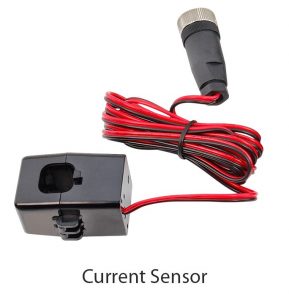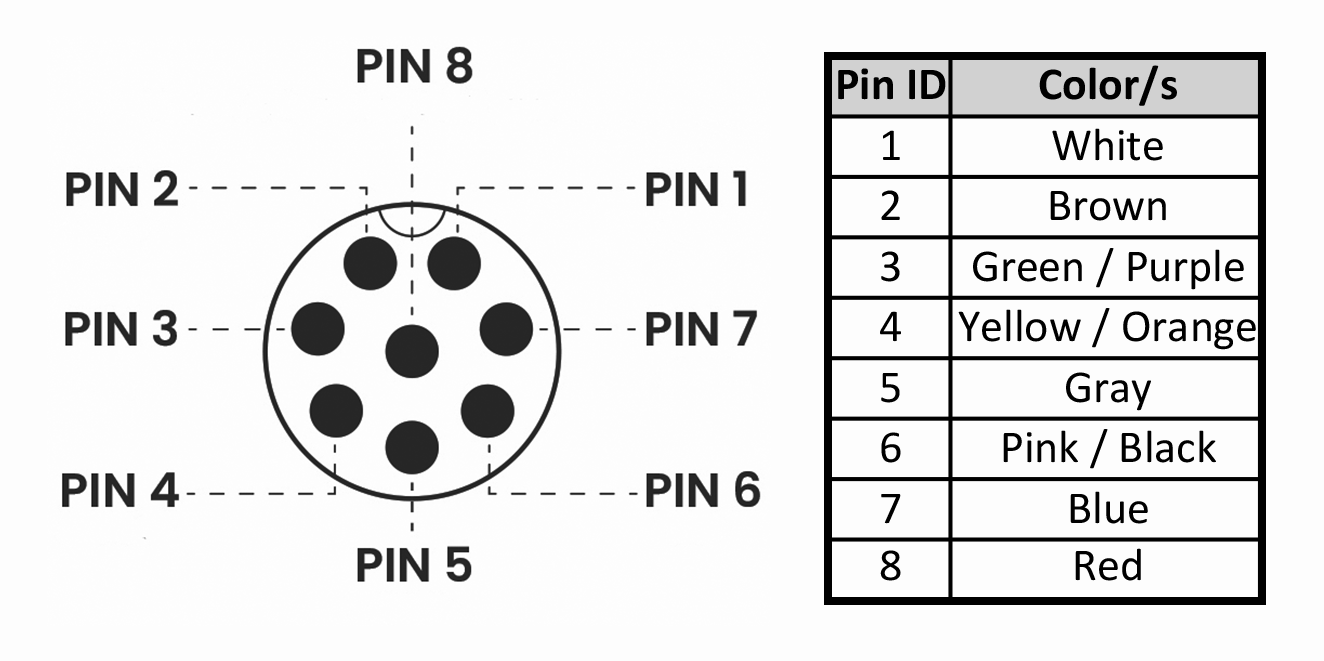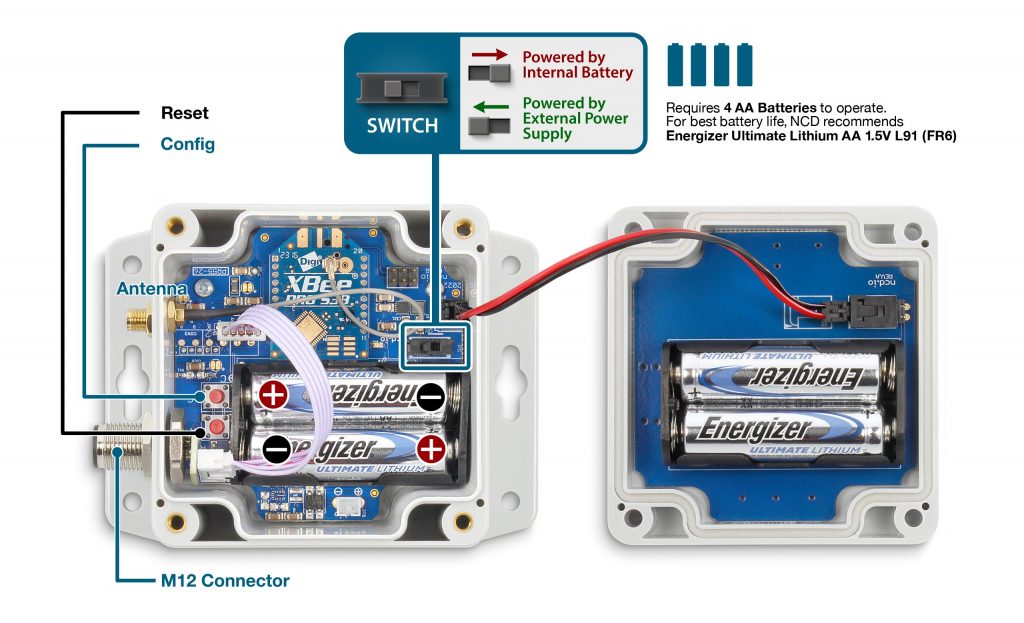Device Overview
Introducing NCD’s Industrial IoT Wireless AC Current Monitor Sensor, boasting up to a 2 Mile range using a wireless mesh networking architecture. This sensor transmitter works together with a split core current sensor (included). It samples current at a high data rate and calculates the RMS Current value and sends a wireless transmission. This process is repeated at user defined timing interval while sleeping in between to minimize power consumption. The sensor comes with а 1.25 meter long split core current sensor which makes installation easy.
This Industrial IoT Wireless AC Current Monitor Sensor is capable of detecting change in current at user defined detection time intervals and sending out data if the current change is greater than user defined detection change percentage. This change detection feature can be enabled or disabled as needed. To minimize power consumption, the current sensor sleeps to preserve battery life. Both of these features work together to support multiple application areas in one package.
Features
- Industrial Grade Wireless Current Monitor
- AC Current Range 0-100/200/600/1000A RMS Measurement (depending on the chosen probe)
- Auto Time Delay Based Data Sample Transmission
- Current Change Detection and Transmission
- Configurable Current Sensor Calibration Over Wireless
- Wall-Mounted or Magnet Mounted IP65 Rated Enclosure
- Up to 2 Mile Line-of-Sight Range with On-Board Antenna
- Wireless Mesh Networking using DigiMesh®
- Open Communication Protocol for Easy Software Integration
- Fully configurable via Node-RED
- Power-Efficient Sleep Mode, Up to 10 Year Battery Life
- User Configurable Sleep Duration
Status LED
The Status LED is used to indicate errors or other sensor diagnostics.
LED blinks once – Message was sent successfully and no error in last sensor read as well in data transmission.
LED blinks twice and then one more time – Message was sent successfully but there was an error in last sensor read.
LED blinks thrice – MCU is having issue communicating with the radio module.
Sensor Specifications
| Specifications | Minimum | Nominal | Maximum | Notes |
|---|---|---|---|---|
| Width | 3.54" | |||
| Length | 4.52" | |||
| Height | 2.16" | |||
| Enclosure Rating | IP65, NEMA 1,2,4,4X,12,13, UL-508 | |||
| Temperature Rating | -40° C | 23° C | 85° C | Component Rating |
| Tested Temperature | 0° C | 23° C | 40° C | As Tested by NCD Staff |
| Probe Temperature | -40° C | 23° C | 85° C | As Tested by NCD Staff |
| Inputs | Current | |||
| Measured Current Range | 0 A | 1000 A | Depends on the particular probe chosen | |
| Resolution | 50 mA | 500 mA | Depends on the particular probe chosen (Min measured current 1.5% of FS) |
Printed Circuit Board Specifications
| Parameter | Minimum | Nominal | Maximum | Notes |
|---|---|---|---|---|
| Trace Width | 0.007 inch | 0.012 inch | 0.25 inch | Trace Width depends on the Trace Type |
| Layer Count | 2L - Rigid | Top and Bottom Layer | ||
| Material Type | FR-4 TG170 | FR-4 TG170 | FR-4 TG180 | |
| Surface Finish | ENIG 2u" | |||
| IPC Standard | IPC CLASS 2 | |||
| Finished Copper Foil | 1.0/1.0 OZ | |||
| Finished Thickness | 0.062 inc | |||
| Fine line <4.0/4.0mil | No | |||
| Blind & Burried Vias | No | |||
| Non-Conductive Resin | No | |||
| Conductive Resin | No |
Mechanical Drawing
RF Module Specifications
| Parameter | 868MHz | 900MHz | 2.4GHz |
|---|---|---|---|
| Frequency Band | 863 MHz to 870 MHz | 902 to 928 MHz | ISM 2.4 GHz |
| Transmitter Power | Up to 13 dBm ERP | Up to 24 dBm | Up to 8 dBm |
| Receiver Sensitivity | -106 dBm at 80 Kbps | -101 dBm at 200 Kbps | -103 dBm at 250 Kbps |
| Range (dense urban) | ~1000ft | ~1000ft | ~300ft |
| Range (line of sight) | ~2 miles | ~2 miles | ~1 mile |
| Data Rate | 80 Kbps | 200 Kbps | 250 Kbps |
| Networking Protocol | Digi XBee® DigiMesh® | Digi XBee® DigiMesh® | Digi XBee® DigiMesh® |
| Encryption | 128-bit AES | 128-bit AES | 128-bit |
| Reliable Packet Delivery | Retries/acknowledgements | Retries/acknowledgements | Retries/acknowledgements |
| IDs | PAN ID and addresses, cluster IDs and endpoints (optional) | PAN ID and addresses, cluster IDs and endpoints (optional) | PAN ID and addresses, cluster IDs and endpoints (optional) |
| Certification | CE/RED, ROHS Compliant | FCC (America), IC (Canada), C-Tick (Australia), Anatel (Brazil), IDA (Singapore) | FCC (America), IC (Canada), RCM (Australia), Anatel (Brazil), Teleck MIC (Japan), KCC (South Korea) |
Probes Specifications
Current Sensor
NCD offers several options for the current clamp for this sensor. Depending on which one you chose, the measurement range will be different, here are you options:
- 100 amp CT: 50mA resolution ( Min measured current 1.5% of FS)
- 200 amp CT: 100mA resolution ( Min measured current 1.5% of FS)
- 600 amp CT: 300mA resolution ( Min measured current 1.5% of FS)
- 1000 amp CT: 500mA resolution ( Min measured current 1.5% of FS)

Probe Configuration and Wiring

Power Requirements and Expected Battery Life
Power Requirements
This Sensor has two power options:
- Powered by AA batteries (NCD recommends Energizer L91 batteries)
- External power supply (5-12 V DC) Current Requirement 250 mA (optional)
While changing the batteries:
- Turn off the sensor
- Only use new L91 batteries
- Checkout the polarity marking on the battery holder and batteries
- Replace all six batteries with new L91 batteries. Do not mix old and new batteries
- Batteries should not be replaced in fire-risky areas
- Do NOT install rechargeable batteries
Expected Battery Life
| Specifications | Minimum | Nominal | Maximum | Notes |
|---|---|---|---|---|
| Batteries | 2 | 4 | 4 | May be Powered by 2 or 4 AA Batteries |
| Battery Life 6 TPD (TPD Transmissions per Day) | 8 Years | Battery estimation is based on a 30 min interval | ||
| Battery Life 12 TPD (TPD Transmissions per Day) | 5 Years | Battery estimation is based on a 30 min interval | ||
| Battery Life 24 TPD (TPD Transmissions per Day) | 3 Year | Battery estimation is based on a 30 min interval |
Head to the NCD store if you want to purchase the Industrial IoT Wireless AC Current Monitor Sensor.
If you already have the device and would like more information into its basic and advanced operations check out the Quick Start Guide and User Manual.



